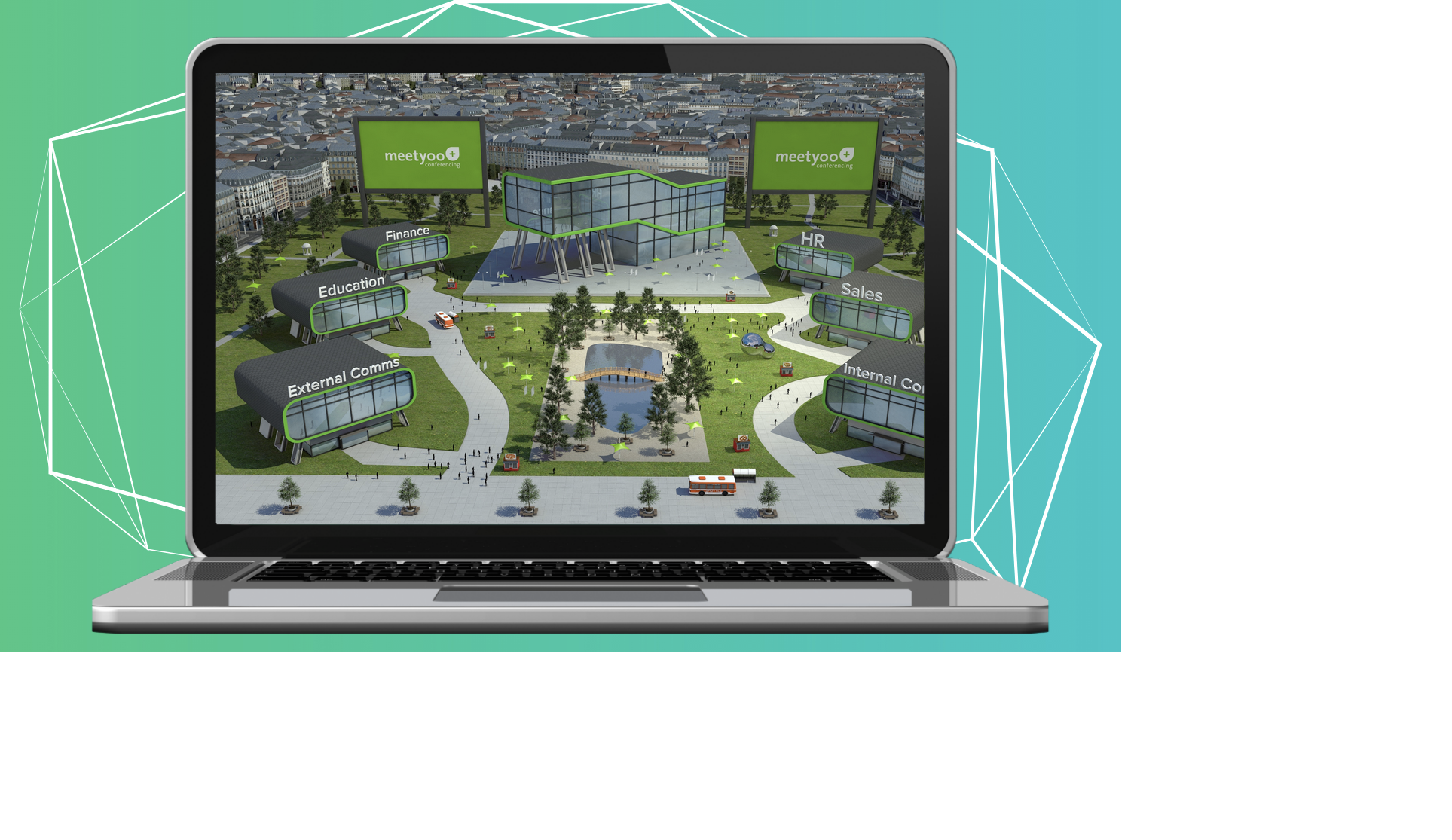With the digital medium set to be permanent part of the meetings landscape, there’s going to be constant competition among technology providers and meeting planners to deliver more sophisticated, more seamless, and more impactful experiences for virtual attendees.
One of the most recent results of this competition: Virtual campuses that enhance internal sales meetings and collaboration while also hosting events, ongoing interactions, and product education with clients and other industry members all year long.
The most interesting part for planners is that virtual meetings can be hosted within a campus by partnering with a stand-alone virtual-event platform, but planners can also leverage other parts of the campus functionality for a more satisfying attendee experience that keeps them coming back to interact with a sales rep or simply explore on their own.
It’s those various elements that Jenna Linnekens, chief strategy officer for Total Brand Experience LLC, has been working on for a medical-device client for more than a year now. Linnekens is not only coordinating meetings within the campus using the virtual-platform provider MeetYoo, but she’s also helping to build out other parts of the campus to keep both internal and external learning and conversations going before and after meetings.
Logistical and Strategic Advantages to a Campus
The medical-device client maker Linnekens is working with wanted a more comprehensive online presence than a corporate website complemented by events run on a stand-alone platform accessed through a web browser. From a logistical standpoint, the latter setup doesn’t work because “most of their clients work in laboratories, where the web-security concerns are significant,” she says. “Things must be encrypted to a higher degree but still be accessible for all types of devices.” Having the digital-meeting platform live inside a virtual campus, however, means that host brings attendees into a more secure environment that it controls with strong encryption and security of its own.
Furthermore, from a strategic perspective “the virtual campus gives companies the opportunity to create a complete brand experience when someone visits for a meeting or for any other reason,” such as to take part in live product demos, conversations with company reps and industry colleagues, or to simply view on-demand video content, white papers, and more.
 “A virtual campus is about creating a sense of place,” says Linnekens (pictured here). “It’s an experience that acts more like the real world because it’s a representation of a physical location.” Just like companies have various buildings or wings at their brick-and-mortar facilities, a virtual campus uses buildings or wings to house different elements, some of which are accessible only to internal employees and some of which is available to clients and other visitors.
“A virtual campus is about creating a sense of place,” says Linnekens (pictured here). “It’s an experience that acts more like the real world because it’s a representation of a physical location.” Just like companies have various buildings or wings at their brick-and-mortar facilities, a virtual campus uses buildings or wings to house different elements, some of which are accessible only to internal employees and some of which is available to clients and other visitors.
“To the user, it feels like an actual journey rather than just clicking around the pages of a website,” Linnekens adds. “Visitors to a virtual campus actually arrive in a lobby and then move on to different buildings or wings. It’s a more human experience.”
One caveat: A virtual campus does not provide a point-of-view perspective as if visitors are taking steps as they move through spaces. “This is not an avatar experience,” Linnekens notes. (To learn about the avatar experience for meetings and trade shows, read this MeetingsNet article.)
The Meeting Experience and Other Interactions
Linnekens recently executed a national sales conference for her med-device client within its campus—an event that included top-customer interactions with senior leadership and reps during executive roundtables and product-review sessions.
First, “the company brought customers in all together and then broke them into roundtable discussions using virtual breakout rooms. We also got them into the Innovation Center where they could have a conversation with the CEO that they probably wouldn’t be able to have in person,” says Linnekens. “The virtual campus lets us create spaces and opportunities that make it very attractive for customers to attend virtually—not just time with company leadership but also with high-profile presenters.”
Second, there was a product-showcase feature coinciding with the national sales conference. “The firm wanted to build a branded experience for their customers to come in to see the products, participate in live demos, and have conversations with salespeople, all while capturing the metrics associated with that.”
One thing the med-tech client has learned: It needs more pre-show marketing to promote the depth of the campus’ offerings for year-round use. “The message must be, ‘When you come into campus, here is everything the experience can be for you,” Linnekens notes. “The marketing needs to incorporate not just what a particular event features, but the campus’ assets in their totality so that people realize they have many reasons to come into the campus frequently. We need to make this a place people become familiar and comfortable with.”
Case in point: For the med-device maker, “certain clients are invited into a VIP area after the sales conference where they can have a one-on-one exploration of the device that is specific to their role at the lab or hospital,” Linnekens says. “So, the reps are inviting them at certain times of the year to come back, and as they get more comfortable with the campus, they start coming in on their own to either absorb content or be part of ongoing conversations. And again, the company garners metrics from that activity.”
The minimum investment for a small virtual campus with meeting capability is between $50,000 and $100,000, says Linnekens, with a multi-building campus offering more features for employees and visitors coming with a price tag between $250,000 to $500,000. But then cost efficiency comes from being able to hold sales, HCP, and customer meetings more frequently without travel and facility costs, along with the benefits of having a deeper digital-meeting experience than what’s possible on a virtual platform that runs through a web browser.
The bottom line is that “pharma and med-device firms don’t want to lose the wide reach they have achieved through virtual up to this point,” says Linnekens. Even under business-as-usual conditions, companies could not get that same number of people to attend events in person, so “a robust experience that gives people a sense of place is the next best thing.”

